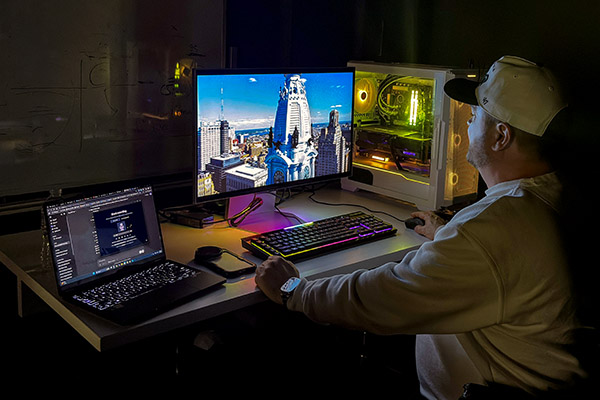Motorola Unveils New Razr Android Phones: A Bold Step into Flip-Style Technology

Yesterday, I attended a captivating 2.5-hour pre-briefing event hosted by Motorola, where the company showcased its latest trio of Razr Android phones. It became abundantly clear that Motorola is firmly committed to the flip-style foldable design that has gained significant popularity, particularly following the release of Samsungs Galaxy Z Flip. Furthermore, Motorola believes that integrating advanced artificial intelligence (AI) deeper into the software will enhance user experience, moving us away from the frustration of navigating apps and buttons manually.
The newly launched devices are the Razr, Razr+, and Razr Ultra, which can be categorized as good, better, and best, respectively. According to Motorola, the Razr Ultra stands out as the most powerful flip-style smartphone on the market, boasting an impressive camera system. While we will reserve final judgment until we have the opportunity to conduct a thorough review, the specifications providedespecially the inclusion of the cutting-edge Qualcomm Snapdragon 8 Elite chipsetcertainly suggest that it holds great potential.
At first glance, the three devices may appear quite similar, but there are distinguishing features that set them apart. The Razr Ultra, being the premium model, flaunts a large 7-inch internal display, a dedicated Moto AI button positioned on the left side, and luxurious finishing options that include Italian-made Alcantara, satin, faux leather, and wood. Additionally, it offers high-end upgrades that may not be immediately visible: a robust camera setup featuring 50-megapixel main, ultra-wide, and selfie cameras; a substantial 4,700mAh battery; 68W wired charging; 30W wireless charging; and a 5W reverse wireless charging capability.
Next in line is the Razr+, which closely resembles the Razr Ultra but has a slightly smaller 6.9-inch internal screen. Unlike the Ultra, it lacks a physical AI button and comes equipped with a smaller 4,000mAh battery, slower charging capabilities (45W wired and 15W wireless), and a selfie camera with lower resolution at 32 megapixels. Additionally, it features a less powerful Qualcomm Snapdragon 8s Gen 3 chipset.
The entry-level model, aptly named the Razr, includes a modest 3.6-inch external display, which is distinguished by a noticeable forehead bezel absent from its more advanced counterparts. It also offers lower resolution cameras (50-megapixel main, 13-megapixel ultra-wide, and 32-megapixel selfie) and is powered by a mid-range MediaTek Dimensity 7400X chipset. Interestingly, the Razr boasts a slightly larger 4,500mAh battery compared to the Razr+.
During my brief hands-on experience with all three models, I noticed their solid build quality, with the primary difference in materials and finishes being evident. The luxurious Alcantara on the Razr Ultra was particularly appealing, while the polished aluminum and plastic used in the baseline Razr did not feel cheap, which is commendable.
Motorola has also highlighted several quality-of-life upgrades for the new Razr lineup. For instance, the hinges are constructed from titanium, said to be four times stronger than previous iterations, and capable of enduring up to 35% more folds than earlier models. Furthermore, the company claims that the crease on the internal folding display is now 30% less visible, though the methodology behind this assertion remains unclear. Users may appreciate that the Razr Ultra features what is purportedly the strongest external screen available, crafted from Corning Gorilla Glass Ceramic.
While tech enthusiasts may be excited about the impressive specificationsespecially those of the Razr Ultrathe true allure of these new flip-style phones may lie in the integration of Moto AI. Rather than developing proprietary AI (a route that has led to challenges for some competitors), Motorola has opted to collaborate with established AI leaders, utilizing their extensive language models and logical reasoning capabilities to enhance various functionalities. The Android 15 operating system is deeply integrated with Perplexity, an AI answer engine that has been making strides in improving search relevance. Other key players such as Googles Gemini, Metas Llama, and Microsofts Copilot also contribute to different elements of Moto AI, which assists users with tasks like suggesting actions (for instance, calling an Uber or drafting an email), summarization, and memory recall (which surfaces information from notes and screenshots). However, it is worth noting that there is no integration with OpenAIs ChatGPT or Anthropics Claude, and there may be reasons behind this decision.
Camera capabilities also benefit from the integration of Moto AI through a feature called Signature Style. This function utilizes AI to automatically adjust tones and colors based on user input and learns from the editing habits of the user. While this feature sounds intriguing, it raises concerns about the authenticity of photographs, which traditionally should reflect a variety of styles rather than adhering to a standardized aesthetic.
The reality is that every smartphone manufacturer is currently promoting transformative AI features, claiming they will enhance convenience and efficiency. The narrative suggests that AI will anticipate user needs and alleviate the burden of countless taps throughout the day. This visionthe AI dreamis being sold by many, including Motorola. The AI capabilities embedded in these new Razr phones are undeniably improved and more practical, yet they are not yet sophisticated enough to take over all functionalities, leaving questions about when or if that will ever occur. Of course, Motorola did not address potential challenges like AI hallucinations during the presentation.
For those interested in purchasing one of these devices, all three Razrs will be available for preorder starting May 7, with an official launch date set for May 15. The pricing for the models is as follows: the Razr will retail for $699.99, the Razr+ at $999.99, and the Razr Ultra at $1,299.99.

























